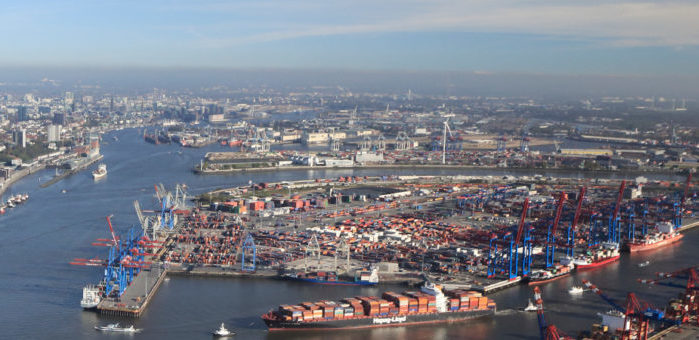German seaports handled 304.7 million tons of seaborne goods during 2018. This is an increase of 1.7%, in comparison to 2017, as the German Federal Statistical Office (Destatis) announced in the beginning of this week.
In addition, the number of goods which German seaports received from other ports rose by 2%. Moreover, the shipping of goods from German seaports over the world’s oceans grew slightly by 1.8%.
[smlsubform prepend=”GET THE SAFETY4SEA IN YOUR INBOX!” showname=false emailtxt=”” emailholder=”Enter your email address” showsubmit=true submittxt=”Submit” jsthanks=false thankyou=”Thank you for subscribing to our mailing list”]
As Destatis informed, the number of containers handled at German seaports was at the same level of about 15.1 million TEUs in 2018.
China is still the most important trade partner for maritime freight transport with 3.0 million standard units, with the US with 1.4 million TEUs and Russia with 0.7 million TEUs following.
Namely, as Daniel Hosseus, managing director of the central association of German seaport companies (ZDS), told Xinhua, trade with China was a main driver, achieving an increase of 5.3%, reaching an overall of 22.9 million tons.
Mr. Hosseus added that these positive results highlight how significant the trade between China and Germany is.
What is more, Xinhua cited Ralf Nagel, chief executive officer (CEO) of the German Shipowners’ Association (VDR) saying that the increase in imports and exports via German seaports is a good sign and indicative of shipping’s importance for the economy.
Finally, considering that protectionism and isolation are increasing, shipping must support globalization, Mr. Nagel believes.






























































